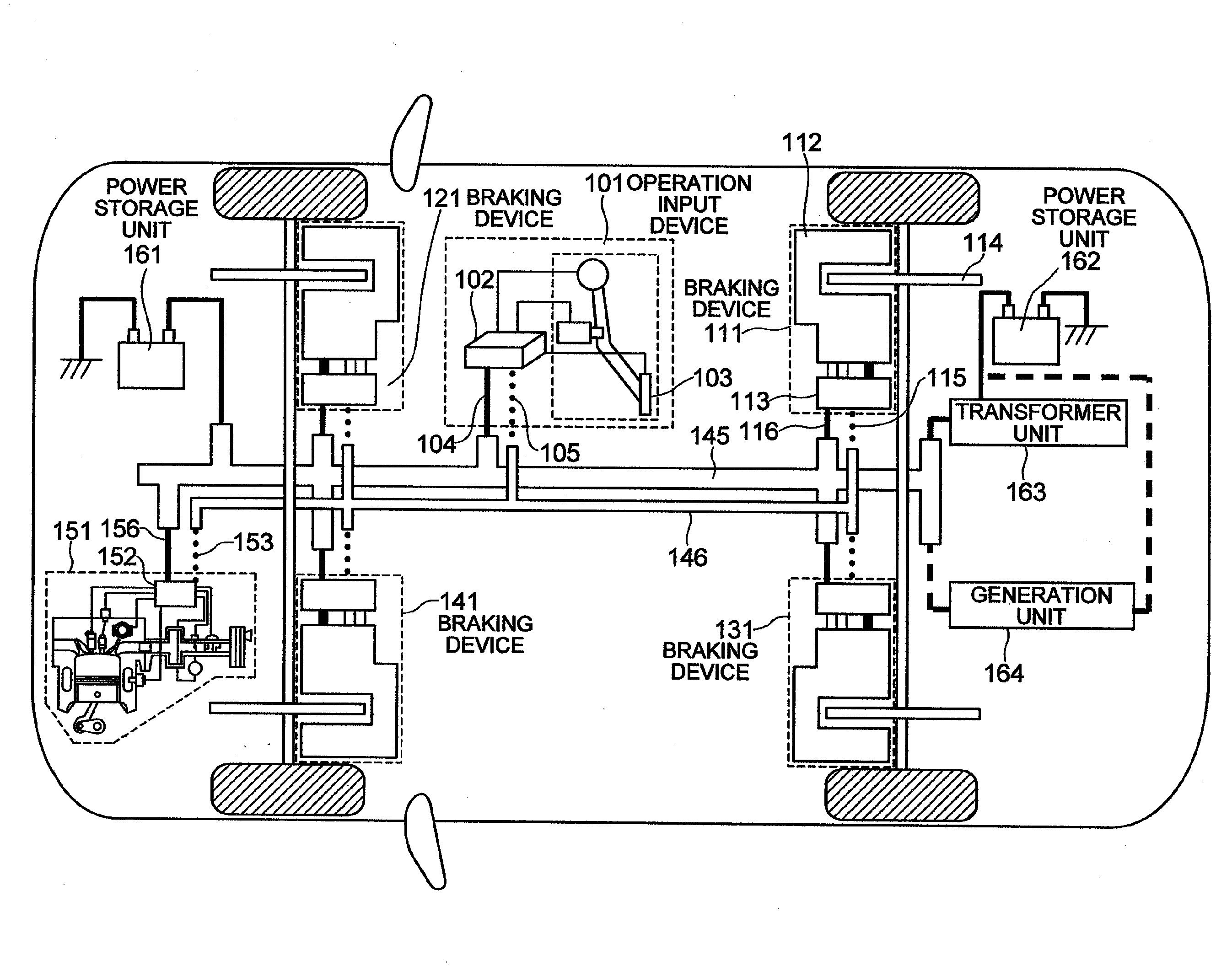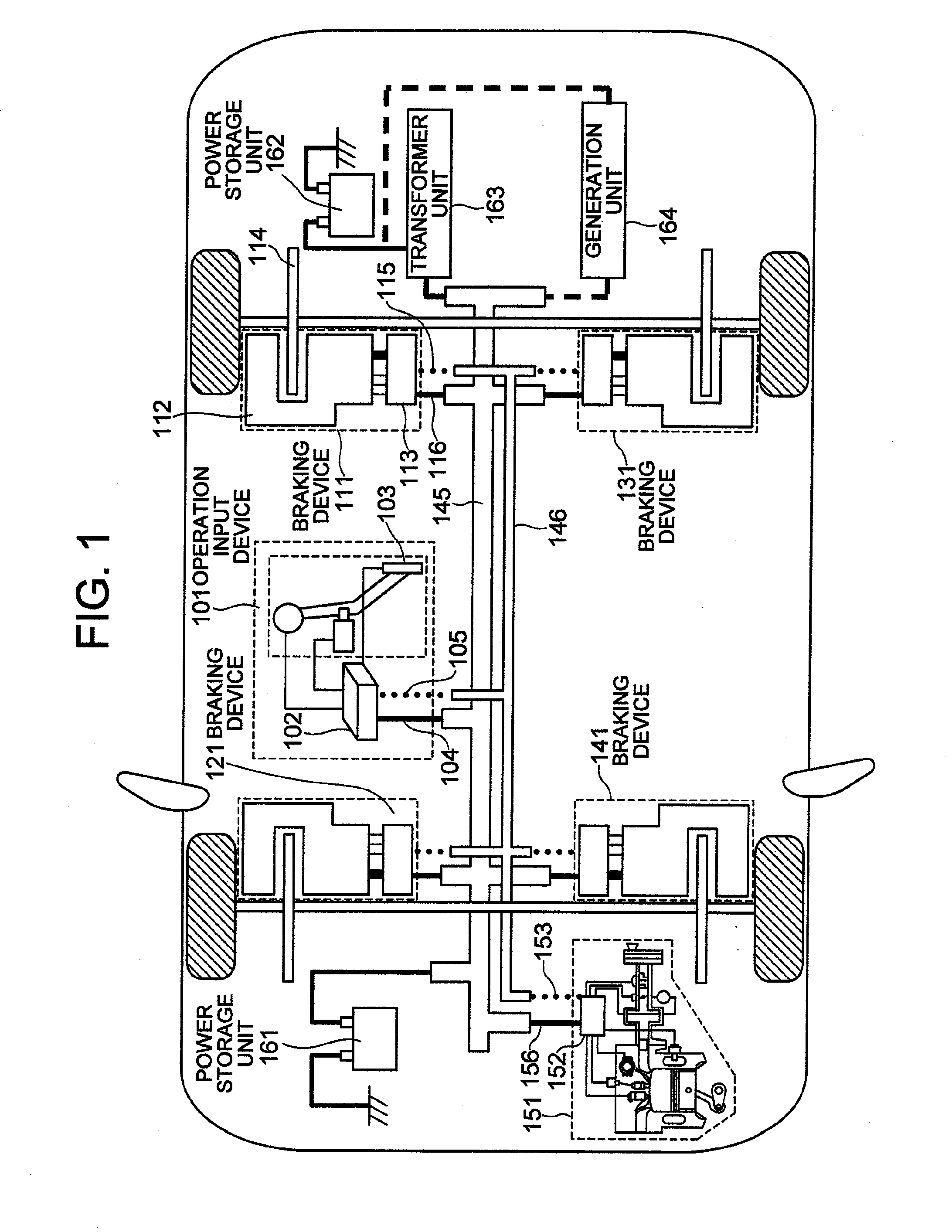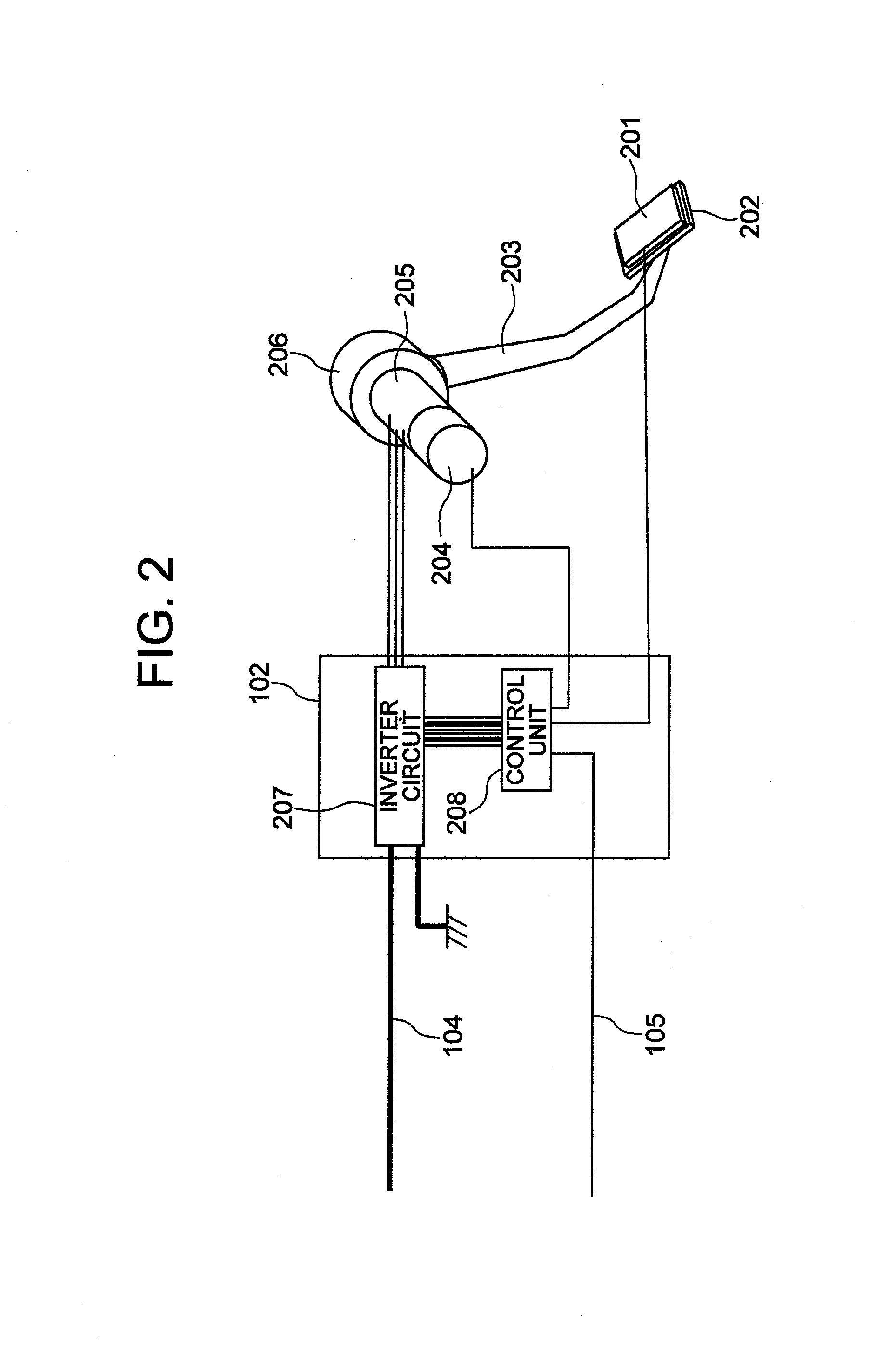On-vehicle actuator system
a technology of actuators and vehicles, applied in the direction of motor/generator/converter stoppers, electric devices, dynamo-electric converter control, etc., can solve the problems of motor not being able to produce torque, motor not being and the vehicle power supply system may not be able to absorb motor electricity generated by the motor, etc., to minimize the possibility of adverse effects
- Summary
- Abstract
- Description
- Claims
- Application Information
AI Technical Summary
Benefits of technology
Problems solved by technology
Method used
Image
Examples
embodiment 1
[0045]FIG. 1 schematically shows a vehicle system having an operation input device, one form of the on-vehicle actuator system of this invention. Reference number 101 represents an operation input device to be operated by a driver to drive the vehicle. It has an operation input unit 103 and a controller 102. The operation input device 101 can generate an operation reactionary force by a motor and also change it arbitrarily. The controller 102 receives or supplies electricity through a power supply wire 104 connected to a vehicle power supply system 145 and controls current and voltage of a motor of the operation input unit 103. The controller 102 also transmits information from the operation input device 101 to a vehicle output device via a communication path 105.
[0046]The operation input device 101 is not limited to a pedal device whose pedal position and pedal speed are changed by a force that the driver applies to the pedal, but may, for example, be a steering device whose steeri...
embodiment 2
[0153]FIG. 16 is a schematic diagram of a system according to embodiment 2. Denoted 801 is a motor-driven booster device and 802 a brake output device or an actuator mechanism having an input mechanism that the driver operates to drive a vehicle. The brake output device 802 has both functions of the brake output device and the operation input device. Designated 803 is an input mechanism operated by the driver when he or she drives the vehicle. This is a pedal in embodiment 2 but, depending on the system configuration, may employ a handle or lever. Denoted 831, 841, 851, 861 are calipers to generate a braking force in the vehicle. The motor-driven booster device 801 generates an operation reactionary force in the input mechanism 803 and also a hydraulic pressure in piping 807, 808. A hydraulic device 821 distributes a hydraulic pressure of piping 807, 808 to piping 823, 824, 825, 826. The hydraulic pressures in the piping 823, 824, 825, 826 act as piston thrusts for calipers 831, 841...
PUM
 Login to View More
Login to View More Abstract
Description
Claims
Application Information
 Login to View More
Login to View More - R&D
- Intellectual Property
- Life Sciences
- Materials
- Tech Scout
- Unparalleled Data Quality
- Higher Quality Content
- 60% Fewer Hallucinations
Browse by: Latest US Patents, China's latest patents, Technical Efficacy Thesaurus, Application Domain, Technology Topic, Popular Technical Reports.
© 2025 PatSnap. All rights reserved.Legal|Privacy policy|Modern Slavery Act Transparency Statement|Sitemap|About US| Contact US: help@patsnap.com



